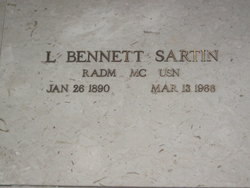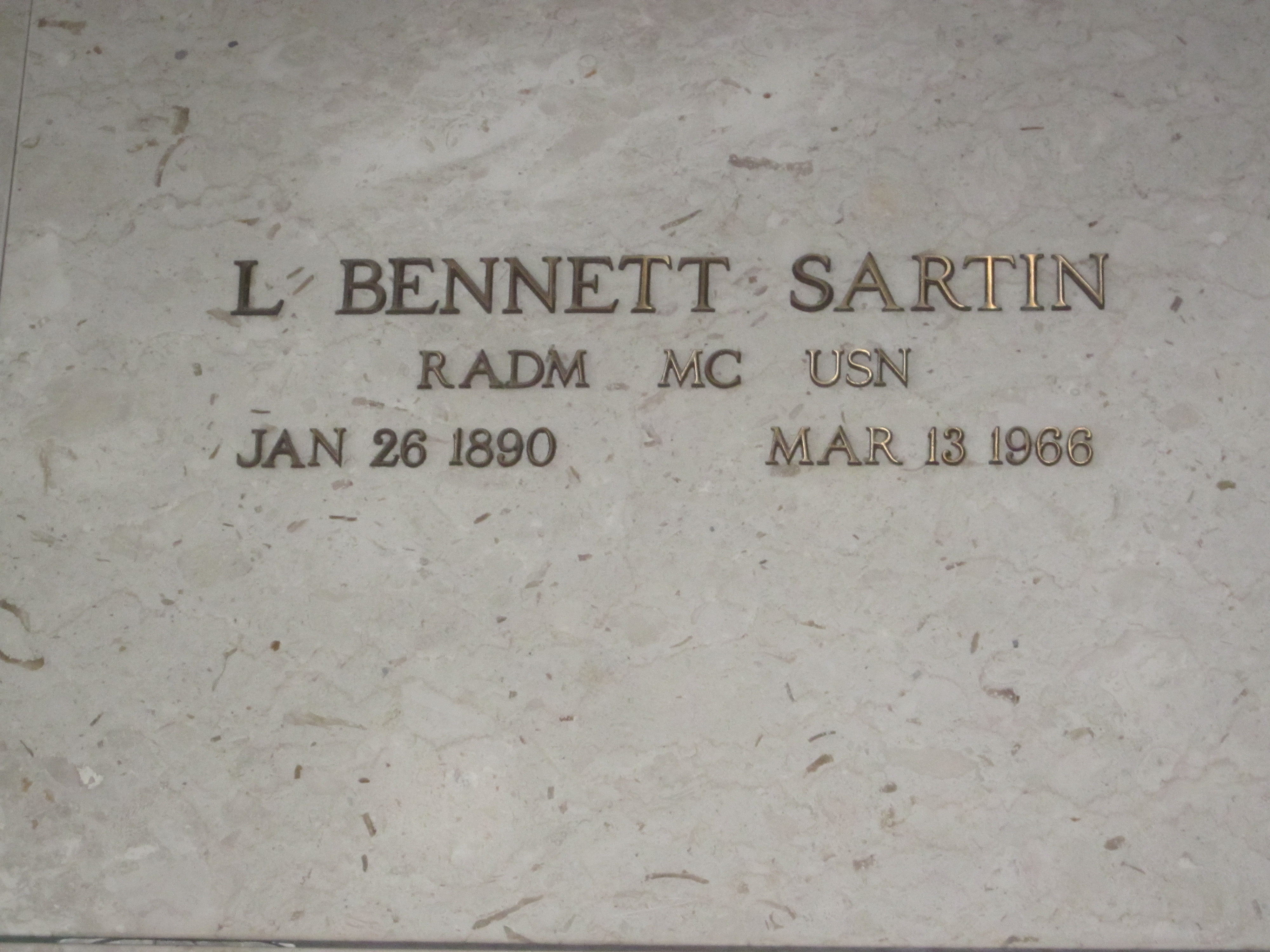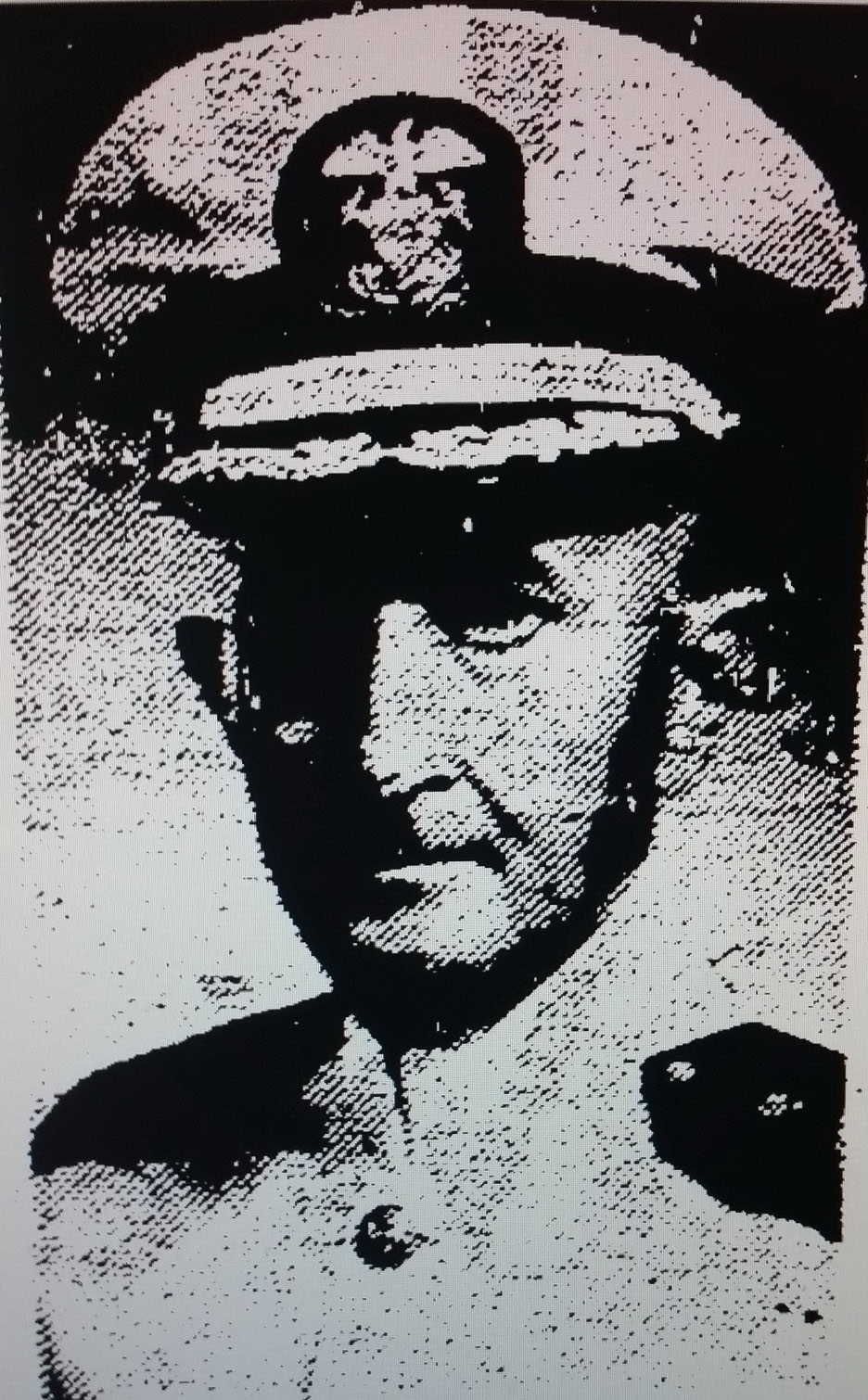Dr. Sartin was the son of Dock Sartin and Nora Chandler of Misissippi. He was married to Cecelia Menville (1893-1953).
The following story was compiled concerning Dr. Sartin's time as a POW during World War II.
In one of the camps, Cabanatuan, there had existed a group of irresponsible men who lived in part by manufacturing spurious sulfathiozole tablets, stamped with a mold made from a cartridge, and selling them to the Japanese guards. The Bilibid doctors were not that kind. From May 30, 1942, three weeks after the fall of Corregidor, to October, 1943, the naval medical unit at Bilibid had been under Comdr. L. B. Sartin of Mississippi, who was then succeeded by Comdr. Thomas H. Hayes of Norfolk. Hayes was marching through the Manila streets now with the column, marching toward the death that was waiting for him in Formosa.
....................
"Hunger, such as Americans in the homeland have never experienced, was always present in Bilibid, and every camp and working detail throughout the Philippines. No person ever had enough to eat,"(16) wrote CAPT L.B. Sartin, MC, commanding officer of the Bilibid Prison Naval Hospital about the worsening conditions.
..............................
Whoever was in charge of Santa Scholastica. The Army was there so I don't know. (referring to document) It says here that on the 24th we left at 6 a.m. and were taken to Jai Lai, where the convoy was to form to go to Bataan. Being alone, I sat on the curb to get out of the way, when one of the Navy nurses, Dorothy Still, assigned to Jai Lai, came out and found me. She wanted to know what I was doing there. I told her I was going to Bataan. She asked me where it was and I told her I had never heard of it until 2 days ago. At that time, I recall walking into the Jai Lai building to see how they had set up approximately 100 beds on the porch. This is in Dr. Davis' diary. It was about this time that Dr. Davis at the Philippine Union College in Balintawok received orders to evacuate the patients and personnel to Santa Scholastica. According to a newspaper article on 3/17/46 by CAPT [Lea] Sartin, approximately 160 Navy and 100 Army patients were treated and facilities were prepared for 700. CAPT Davis ordered the Canacao unit to stay together and serve until further orders came. New orders never came.
Source: http://www.history.navy.mil/faqs/faq87-3b.htm
Dr. Sartin was the son of Dock Sartin and Nora Chandler of Misissippi. He was married to Cecelia Menville (1893-1953).
The following story was compiled concerning Dr. Sartin's time as a POW during World War II.
In one of the camps, Cabanatuan, there had existed a group of irresponsible men who lived in part by manufacturing spurious sulfathiozole tablets, stamped with a mold made from a cartridge, and selling them to the Japanese guards. The Bilibid doctors were not that kind. From May 30, 1942, three weeks after the fall of Corregidor, to October, 1943, the naval medical unit at Bilibid had been under Comdr. L. B. Sartin of Mississippi, who was then succeeded by Comdr. Thomas H. Hayes of Norfolk. Hayes was marching through the Manila streets now with the column, marching toward the death that was waiting for him in Formosa.
....................
"Hunger, such as Americans in the homeland have never experienced, was always present in Bilibid, and every camp and working detail throughout the Philippines. No person ever had enough to eat,"(16) wrote CAPT L.B. Sartin, MC, commanding officer of the Bilibid Prison Naval Hospital about the worsening conditions.
..............................
Whoever was in charge of Santa Scholastica. The Army was there so I don't know. (referring to document) It says here that on the 24th we left at 6 a.m. and were taken to Jai Lai, where the convoy was to form to go to Bataan. Being alone, I sat on the curb to get out of the way, when one of the Navy nurses, Dorothy Still, assigned to Jai Lai, came out and found me. She wanted to know what I was doing there. I told her I was going to Bataan. She asked me where it was and I told her I had never heard of it until 2 days ago. At that time, I recall walking into the Jai Lai building to see how they had set up approximately 100 beds on the porch. This is in Dr. Davis' diary. It was about this time that Dr. Davis at the Philippine Union College in Balintawok received orders to evacuate the patients and personnel to Santa Scholastica. According to a newspaper article on 3/17/46 by CAPT [Lea] Sartin, approximately 160 Navy and 100 Army patients were treated and facilities were prepared for 700. CAPT Davis ordered the Canacao unit to stay together and serve until further orders came. New orders never came.
Source: http://www.history.navy.mil/faqs/faq87-3b.htm
Family Members
Sponsored by Ancestry
Advertisement
Explore more
Sponsored by Ancestry
Advertisement









